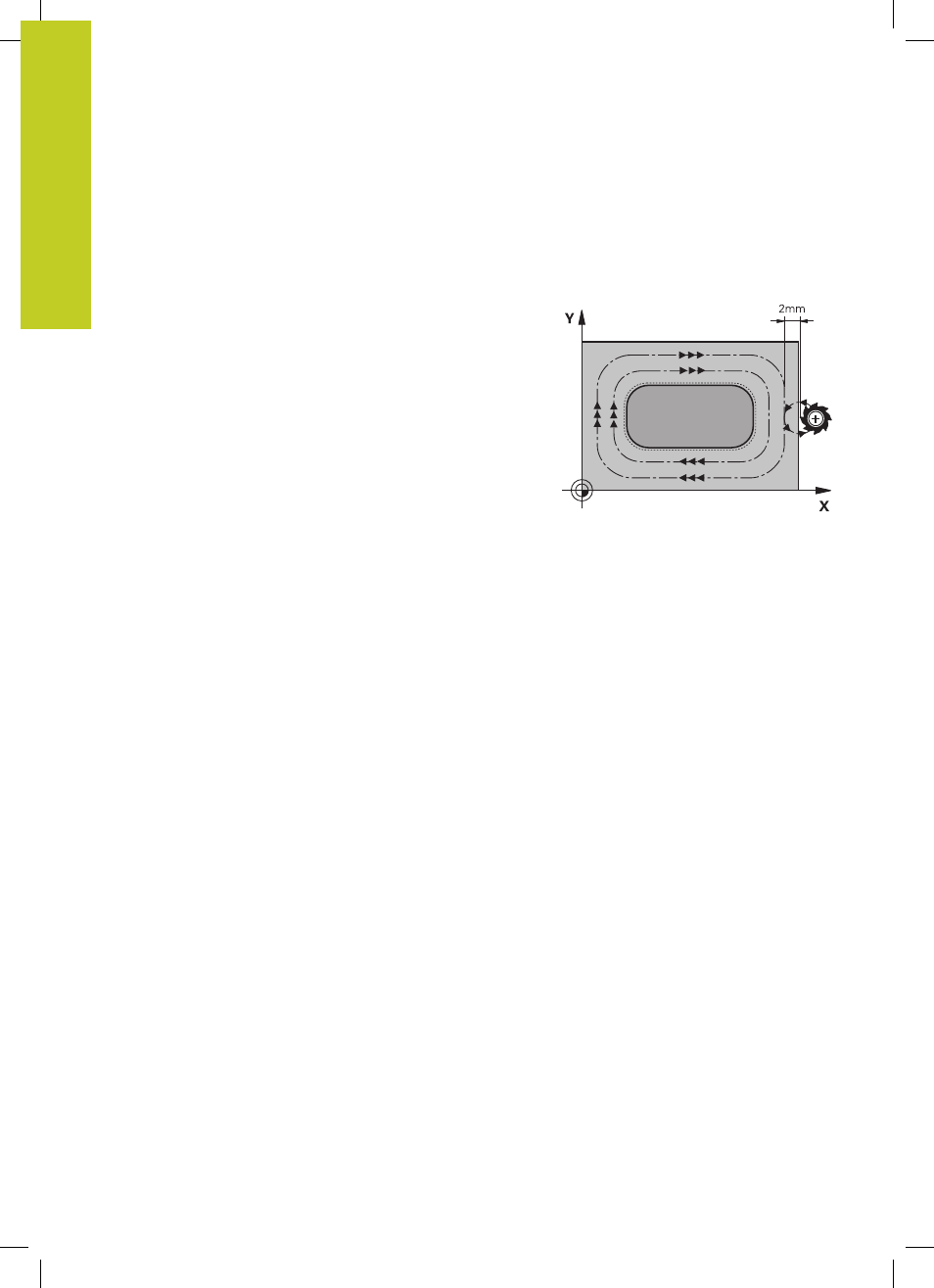Cycle run – HEIDENHAIN TNC 620 (34056x-04) Cycle programming User Manual
Page 148

Fixed Cycles: Pocket Milling / Stud Milling / Slot Milling
5.6
RECTANGULAR STUD (Cycle 256, DIN/ISO: G256, software option
19)
5
148
TNC 620 | User's Manual Cycle Programming | 5/2013
5.6
RECTANGULAR STUD (Cycle 256, DIN/
ISO: G256, software option 19)
Cycle run
Use Cycle 256 to machine a rectangular stud. If a dimension of the
workpiece blank is greater than the maximum possible stepover,
then the TNC performs multiple stepovers until the finished
dimension has been machined.
1 The tool moves from the cycle starting position (stud center)
to the starting position for stud machining. Specify the starting
position with parameter Q437. The standard setting (
Q437=0)
lies 2 mm to the right next to the stud blank
2 If the tool is at the 2nd set-up clearance, it moves at rapid
traverse
FMAX to the set-up clearance, and from there advances
to the first plunging depth at the feed rate for plunging.
3 The tool then moves tangentially to the stud contour and
machines one revolution.
4 If the finished dimension cannot be machined with one
revolution, the TNC performs a stepover with the current
factor, and machines another revolution. The TNC takes the
dimensions of the workpiece blank, the finished dimension, and
the permitted stepover into account. This process is repeated
until the defined finished dimension has been reached. If you
have set the starting point on a corner (Q437 not equal to 0), the
TNC mills on a spiral path from the starting point inward until
the finished dimension has been reached.
5 If further stepovers are required the tool then departs the
contour on a tangential path and returns to the starting point of
stud machining.
6 The TNC then plunges the tool to the next plunging depth, and
machines the stud at this depth.
7 This process is repeated until the programmed stud depth is
reached.
8 At the end of the cycle, the TNC merely positions the tool in
the tool axis at the clearance height defined in the cycle. This
means that the end position differs from the starting position.
